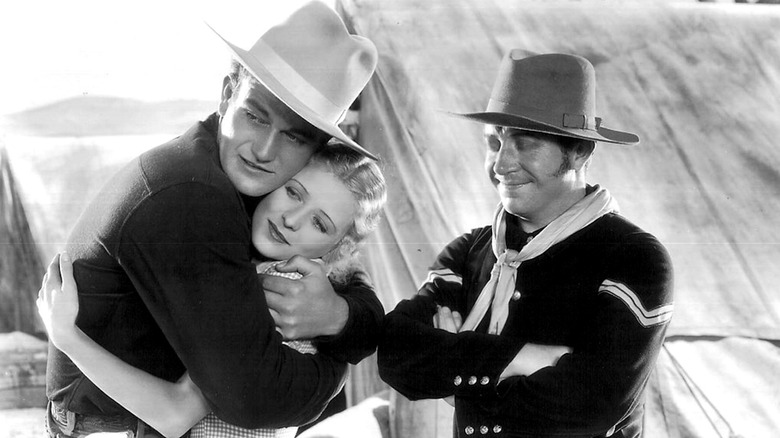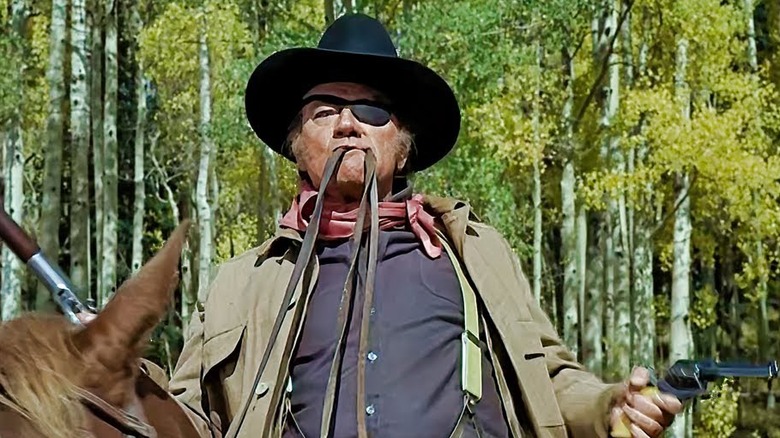John Wayne Early B-Movie Westerns Taught Him An Acting Lesson He'd Never Forget
In the realm of film criticism, people tend to put too much emphasis on classifying cinema as either the "best" or the "worst." Movies can certainly be bad or good, but often there are enough things in a film that fall into the grey area of just being fine that they don't necessarily fit on either extreme of the spectrum. And at the very least, if the latest trip to the theater yielded a complete stinker, it wasn't a waste, because there's always a lesson to be learned, even if that lesson is what not to do when making a movie.
One classic movie star that embraced this outlook is John Wayne. While he's known for his iconic roles in films "The Searchers," "The Man Who Shot Liberty Valance," and "True Grit," the Duke starred in over 170 motion pictures throughout his career — and they weren't all worthy of preservation by the National Film Registry. However, whenever he starred in what he called a "quickie western," the legendary cowboy took the opportunity to hone his craft further. In the end, these reps he put in for B-movie roles during the 1930s really helped him whenever the big guns like John Ford or Howard Hawks eventually came around with a juicer part for him. Although, you'll be surprised to learn what integral part of his acting arsenal he was able to improve on these low-budget sets.
How the West was won
In his book "Shooting Star: A Biography of John Wayne," entertainment journalist and biographer Maurice Zolotow asked Wayne what was the most valuable lesson was that he took away from the time in his career when he headlined "cheapie" westerns. Zolotow expected the American icon to reveal that he improved his physicality, gun work, or dealing with the harsh shooting locations he'd frequently have to endure. However, the writer was surprised to find out that the actor learned "how to speak lines" and how to deliver exposition convincingly on these movies:
"Most anybody can play anger or hysteria, but try to do a long borin' speech ... The biggest difference between a B Western and an A Western is in how they tell the story. The B-picture has to do it with stretches of talk, straight exposition. Every once in a while they stop the action and the hero or somebody explains the background or why somebody came to town. In a good picture, you get the stories and character across indirectly, and you build up characters and dramatic scenes with images and action."
Considering that Wayne starred in over 100 of these lower-level movies, he definitely had a lot of chances to work on this part of his repertoire. And in the end, the practice paid off because Duke reached a level of fame where he's considered one of the greatest movie stars of all time.

